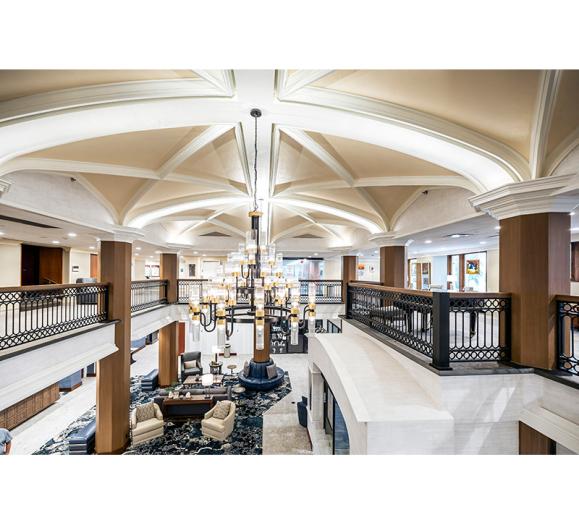TIP 1: True blue light
The mistake that architects, interior designers and homeowners often make is that they don’t consider how finishes will be altered under artificial light sources at night. It’s absolutely true that daylight has the best color rendering capabilities. It’s not uncommon for us to go over to the window to take a look at the color of a sweater, a tile sample, a paint color … or those newly applied highlights in your hair.
The issue is that we don’t have daylight at night — instead, we’re looking at all of our finishes under artificial light, whether it’s incandescent or LED (I’m not even mentioning fluorescent). Incandescent light has an amber hue, which becomes more intense as it’s dimmed. This warmness shifts colors dramatically. Reds turn into oranges, whites turn into yellows and blues turn into greens. Even metals will shift in color. Pewter can look like brass in color temperatures in the 2700K to 2150K range. LEDs are now being designed so that they will mimic dimmed incandescent, shifting in color temperature to the lower ranges as their intensity is reduced. Now they too will shift colors.
My recommendation is to take a look at all of your finishes under both a daylight situation and an evening situation, using the light source selected to review your color board. This way, you’ll know what they’ll look like both during the day and in the evening so that there aren’t any surprises.
TIP 2: Shiny is as shiny does
A polished finish acts like a mirror — it will reflect any light source that’s directed toward it. High-gloss countertops are impossible to illuminate without seeing the reflection of the task lighting. Luckily, matte or honed countertops are becoming more popular. They allow the light to diffuse and give a more even illumination along the work surface. If you have your heart set on shiny countertops, then I’d recommend using a linear light source that’s lensed so that at least you’re not seeing the individual bulbs or LED diodes. This rule applies for toe kick lighting in the bathroom as well. If you’re tucking in a linear light above the baseboard, then make sure that the flooring, whether it’s tile or wood, has a non-shiny surface. You can do a glossy finish in the center of the floor as long as the border is matte.
TIP 3: Color on, color off
Dark surfaces are light-absorptive. A room that has darkly painted walls or a kitchen that has dark wood cabinets is going to need more lumens than a room with white walls or white cabinets. Dark wood ceilings are particularly tough to illuminate, although I’m a big advocate of indirect illumination because it’s very complementary to people within the space, softening shadows on their faces and filling the room with a warm glow. It is definitely worth the effort. I would have you consider lightening the color of the wood so that it’s more reflective, and if there are beams, they can stay in the darker color.
Also, do consider the colors you choose for your walls. It will mix with the color of the illumination and then bounce back onto people. Skin tones can be negatively affected. A green wall mixed with yellow light produces an unflattering, sallow skin tone. Nobody wants that.







